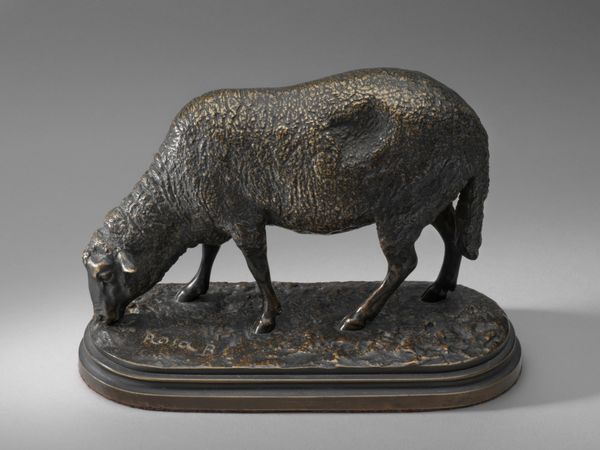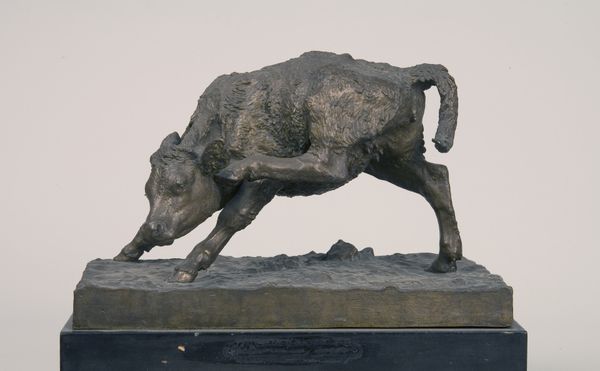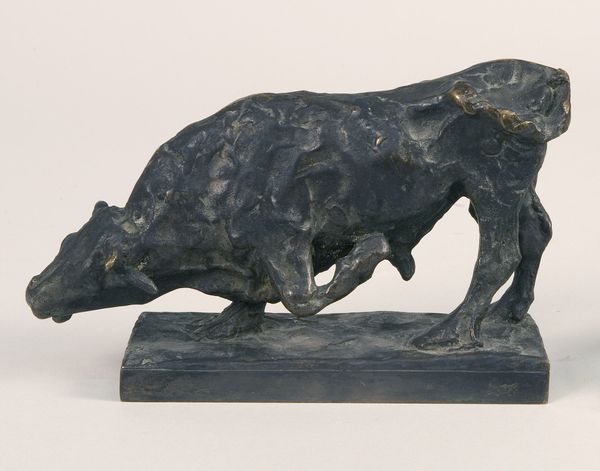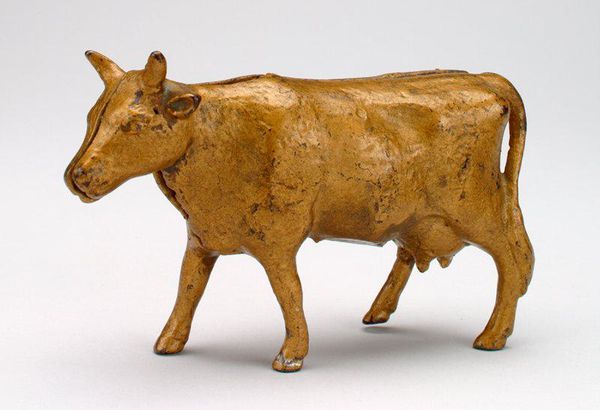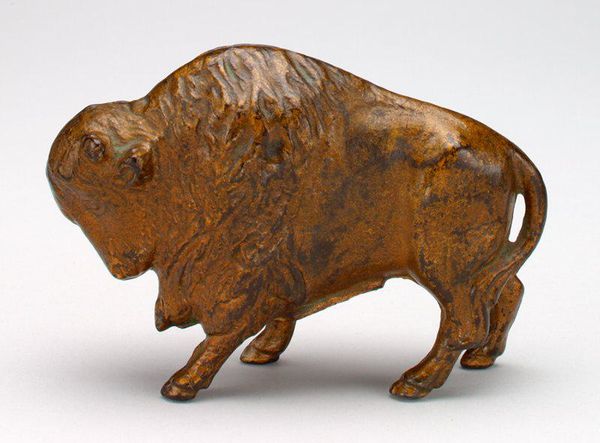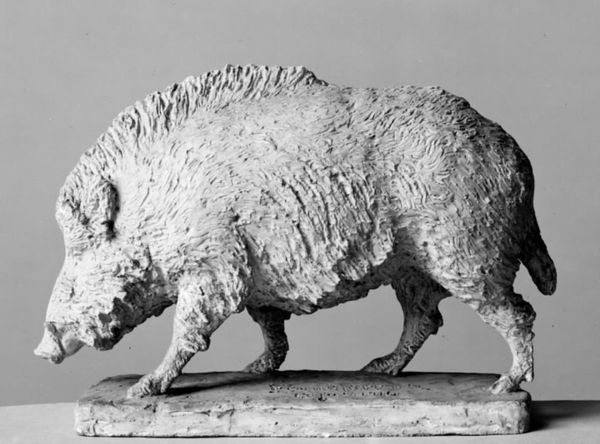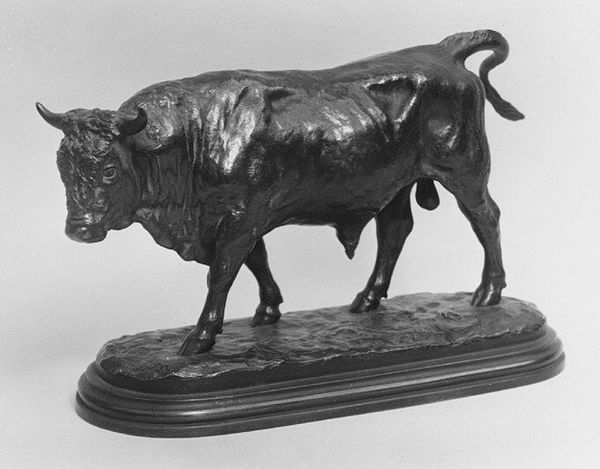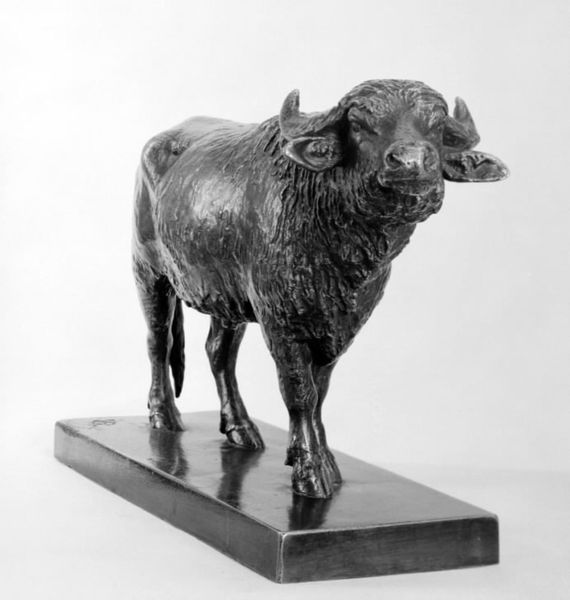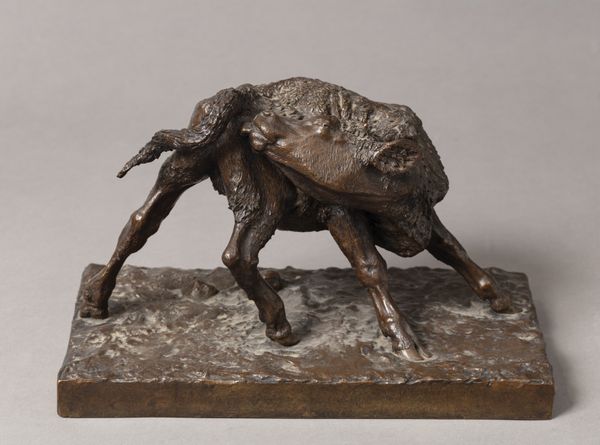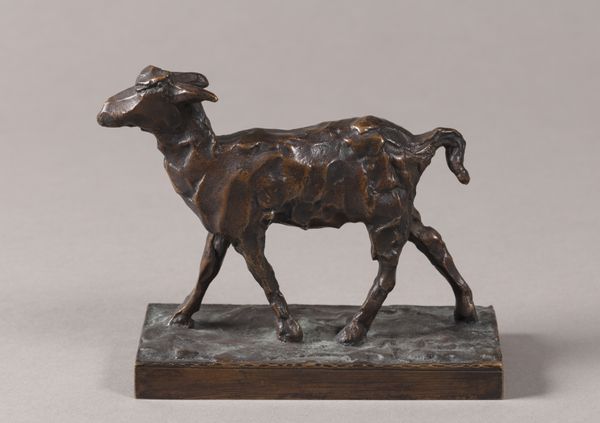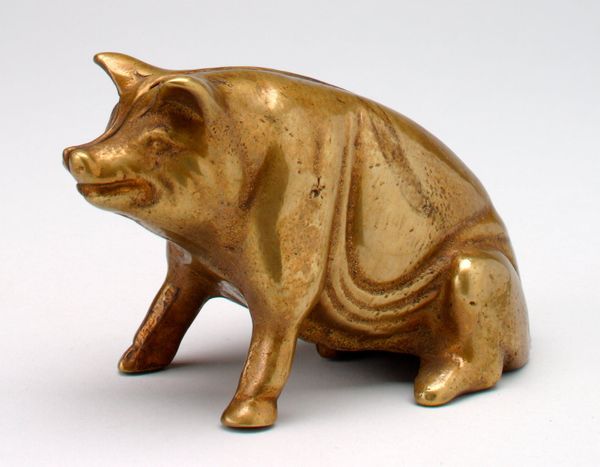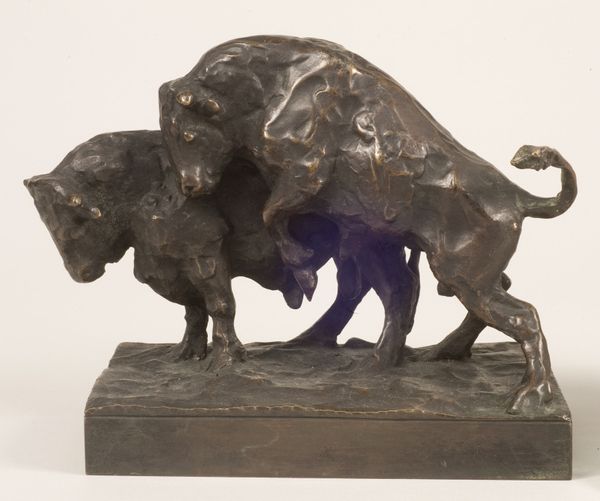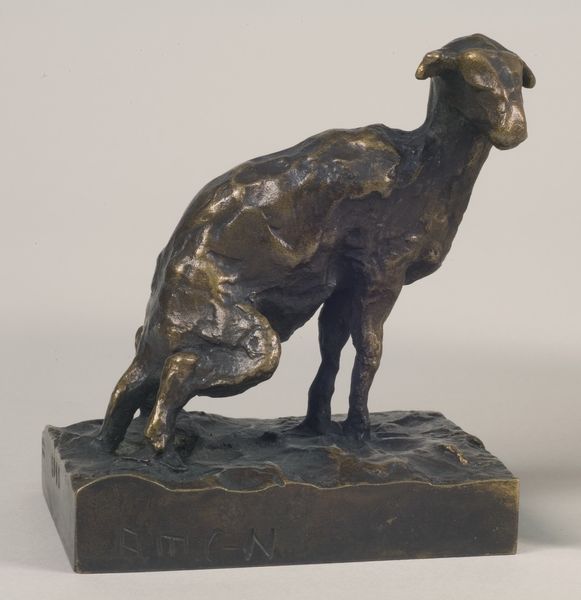
bronze, sculpture
#
sculpture
#
bronze
#
sculpture
#
decorative-art
#
realism
Dimensions: Overall: 5 3/4 × 8 1/2 × 4 in. (14.6 × 21.6 × 10.2 cm)
Copyright: Public Domain
Editor: Here we have Rosa Bonheur’s "Shorn Ewe," a bronze sculpture from the late 19th century. It’s smaller than I expected, and yet there’s something very grounding and familiar about its presence. What symbolic weight do you think this unassuming sculpture carries? Curator: Indeed. While seemingly simple, this bronze holds rich cultural significance. Consider the ewe itself: throughout history, sheep have been potent symbols of pastoral life, innocence, and sacrifice, echoing deeply within religious and secular narratives. Now, observe that it’s been shorn. Editor: What does that signify in this context? Curator: The act of shearing introduces notions of both vulnerability and renewal. On one hand, it reveals the sheep's defenseless state; stripped bare. On the other, it suggests a yielding to the cycle of life and nature, holding promise of growth. What emotional response does that stark contrast evoke in you? Editor: It’s interesting... I initially saw it as a straightforward representation of rural life, but the shearing adds a layer of complexity. I hadn't considered those layers of meaning related to sacrifice and provision. Curator: Precisely! Bonheur, known for her powerful animal portraits, imbues the “Shorn Ewe” with layers of meaning that resonate even today. Reflect on how industries shape animals to fit our societal desires. How does understanding Bonheur's ewe change our perspective on these relationships? Editor: I guess it pushes us to see these creatures as more than just commodities. The layers of cultural associations really open the piece up. Curator: Agreed. It is through recognizing this complex network of symbols that an artwork reveals the depth of our shared cultural memory. The sculpture prompts us to reflect not only on humanity’s relationship with nature, but also on the cycles of sacrifice, growth, and interconnectedness woven into the fabric of our lives.
Comments
No comments
Be the first to comment and join the conversation on the ultimate creative platform.
